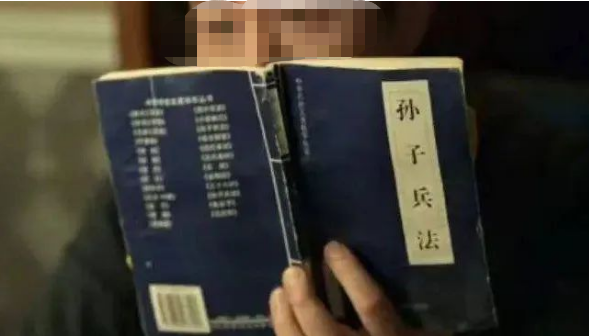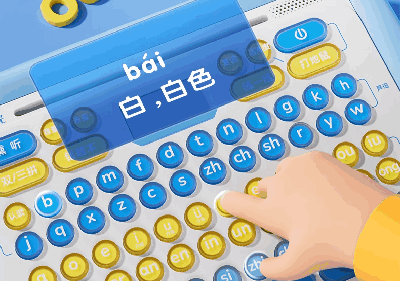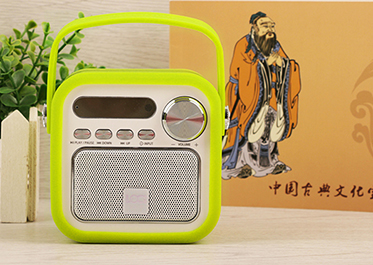"Brother Qiang" is also learning English! These artifacts help your vocabulary "hurri
Although "Hurry" has been ending for a long time, the public opinion it triggered continues to ferment. Strange friends can still be heard discussing in the elevator after work. Brother Qiang has gone from a humble fish vendor to a gangster who everyone calls Brother. Gao Qiqiang's life has been full of ups and downs. Why can Gao Qiqiang, a fish seller, sit in such a high position? He has always known that knowledge changes destiny, so he worked hard to make money to support his younger brothers and sisters in college. Since An Xin recommended "Sun Tzu's Art of War" to him, he has read it repeatedly.

Even though Gao Qiqiang later took an important position in the Construction Engineering Group and became a "gangster", he still did not give up studying. He also asked his subordinates to go to business schools for further studies, and he even hired foreign teachers to conduct one-on-one English learning at home.

"Some people say that the best time to plant a tree is ten years ago, followed by now." As long as you decide to learn English, it's never too late to start. When it comes to language learning, we have to mention smart reading pens or dictionary pens. They can read characters, or look up words, translate, scan and read, etc., which can help us learn languages more conveniently (in his capacity, it can be measured Customize a "Qiangge's special dictionary pen" picture picture picture), and even have a recording function. (I also think of the recording pen that appears in the play, which is an introduction in the play. It can be said to be "a murder caused by a recording pen")
Long story short, back to the topic, reading pens and dictionary pens (including scanning pens, scanning pens, translation pens, etc.) are relatively common intelligent learning tools on the market today. Although what they have in common is that they can help users acquire knowledge and learn languages more conveniently and quickly, they have many differences in appearance design, technical principles, scope of application, and user experience. Here, we will analyze them from multiple aspects.
01 Appearance design
A reading pen is usually a handheld device that looks like a pen or microphone and usually has a button or touch area. Most reading pens come with some LED lights to show their status, such as on/off status, battery level, and what is being read. The design of the reading pen is usually cute and colorful, so it is easier to attract children's attention.
02 Technical principles
The reading pen mainly uses OID invisible code technology, which triggers the playback of sounds or recordings by sensing the reading code (dense small black dots) or QR code on the reading material. It triggers a sound or recording associated with that location by tapping a specific location on the surface of the reader, so the location to be clicked needs to be marked on the reader in advance. During the scanning process of the reading pen, it will transmit the optical information at the touch position to the chip, and then read the corresponding content out loud through the built-in speech synthesis technology.
The dictionary pen uses optical character recognition technology (OCR technology) and an embedded translation system. When the user points the dictionary pen at a word on the text, the built-in optical recognition technology of the dictionary pen automatically recognizes and captures the image of the desired word. Then, it will convert this image into text information through built-in OCR (optical character recognition) technology, replace the traditional electronic dictionary key input with extremely fast scanning and word search, and use the built-in dictionary database to query to find the word Definition, pronunciation, example sentences and other related information. Finally, the dictionary pen will display the query results on the screen for users to refer to and learn from.
The reading pen usually uses the voice recorded by a real person as the pronunciation. The advantage of this method is that the voice is more natural, accurate and fluent, which helps to improve the child's reading comprehension and language expression ability. There are also some reading pens that use electronic speech synthesis engines to synthesize speech. This method has the advantages of low cost, high flexibility, rich and interesting sound effects, and can also meet the needs of children to learn reading and pronunciation. With the continuous advancement of technology and changing market demands, more and more reading pens will use real-person recorded voices as pronunciation.
Although the dictionary pen focuses on the word search function, its pronunciation method is usually realized through the built-in pure human voice, and there are also methods of "combination of computer synthesized pronunciation and real person pronunciation". When the user uses the dictionary pen to look up a word, the dictionary pen will play the real person's voice pronunciation through the built-in voice library or network resources to ensure that the voice output is "correct" and help the user accurately understand the pronunciation and intonation of the word. Not only can the speaking speed be adjusted to allow children who are just starting to read to keep up with the rhythm, but the pronunciation can also be switched between American or British. No matter which category the teacher or foreign teacher is speaking, they can easily follow along and learn.
04 Scope of application
Click and read where the pen clicks, but not all books can be clicked. It is suitable for some reading materials with fixed structure and layout, such as picture books, enlightenment readers, study notes, etc. These reading materials are usually printed or electronically fixed in content and format, so that the reading pen can accurately identify the content that needs to be read.
05 Experience
The use of the reading pen is more intuitive and interactive, because it can trigger the corresponding sound or recording by touching the reading, which is closer to the traditional reading method. When children use the reading pen, they can hear the sound with just a tap, making it easier to understand and remember the learning content. In addition, reading pens usually come with some games and interactive functions, such as voice conversations, puzzles, etc., which can improve children's interest and enthusiasm for learning.
The dictionary pen has a wider recognition range and can recognize different words and images. Children only need to sweep the pen over the content they need to read to translate between Chinese and English, and it can also help you pronounce it aloud. Although it does not require the book to be coded, you can read whatever you recognize. When using the dictionary pen, you need to align the tip of the pen with the reading material.
In general, reading pens and dictionary pens are relatively good intelligent learning tools, and they both have certain advantages, disadvantages and scope of application. Which tool to choose mainly depends on the user's needs and usage habits. The reading pen is suitable for fields such as learning and language learning, mainly for infants and young children. It is simple and easy to use, making learning more interesting and interactive; the dictionary pen is suitable for English learning, reading and management, and other fields, mainly for children, primary and secondary school students. , even universities and adults can quickly find and understand the meaning and usage of words and phrases, improving their English proficiency and learning efficiency. Paper books can also be converted into electronic versions, identified and managed to improve reading and management efficiency.
Proposal recommendation
- TOP



